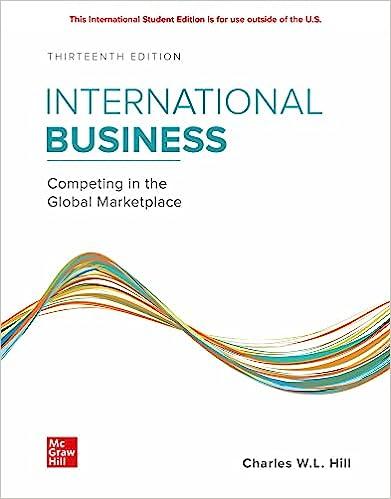On February 4, 2016, ministers from 12 governments signed off on the Trans Pacific Partnership (TPP), a
Question:

The TPP planned to eliminate or reduce about 18,000 tariffs, taxes, and nontariff barriers such as quotas on trade between and among the member countries. By expanding market access and lowering prices for consumers, economists claimed that the deal would boost economic growth rates among TPP countries and add about $285 billion to global GDP by 2025. Because the United States already has very low tariff barriers, most of the tariff reductions would occur in other countries.
U.S. agriculture would have been a big beneficiary. The TPP would eliminate import tariffs as high as 40 percent on U.S. poultry products and fruit and 35 percent on soybeans—all products where the United States has a comparative advantage in production. Cargill Inc., a giant U.S. grain exporter and meat producer, urged lawmakers to support the pact. A number of large, efficient U.S. manufacturers also came out in support of the deal, which would eliminate import tariffs as high as 59 percent on U.S. machinery exports to TPP countries. Boeing, the country’s largest exporter, said that the deal would help it compete overseas, where it gets 70 percent of its revenue. Several technology companies, including Intel, voiced support for the deal, pointing out that it would eliminate import taxes as high as 35 percent on the sale of information and communication technology to some other TPP countries.
Some U.S. companies urged Congress to vote against the deal. Ford opposed the deal because it would phase out a 2.5 percent tariff on imports of Japanese cars into the United States and a 25 percent tariff on imports of light trucks— even though under the agreement, those tariffs would be phased down over 30 years. Labor unions opposed the deal, arguing that it would result in further losses of U.S. manufacturing jobs and lead to lower wages. The tobacco company Philip Morris opposed the deal because it would prevent tobacco companies from suing foreign governments over antismoking measures that restrict tobacco companies from using their logos and brands to market tobacco products.
Several big drug companies also opposed the deal because it only protected new biotechnology products from generic competition for 5 years, rather than the 12 years they had before.
Data supporting these various claims and counterclaims were offered by a number of independent studies, including those from the World Bank, the Institute of International Economics (IIE), and Tufts University. Both the World Bank and the IIE concluded that by creating more overseas demand for American goods and services, by 2030 the TPP would raise U.S. wages slightly above what they would have been without the deal. The IIE study estimated that the TPP would increase annual U.S. exports by $357 billion, or 9 percent, by 2030. The IIE study also calculated that overall, there would be no job losses in the United States. Although some sectors would see job losses, the IIE suggested that these would be offset by job gains elsewhere. The study from Tufts University was the most pessimistic, estimating that the deal would result in the loss of 450,000 jobs in the United States over 10 years. To put this in context, between 2010 and 2015, the U.S. economy created 13 million new jobs, so the worst-case estimate of losses amounted to no more than two months of job growth during the 2010–2015 period.
Just three days into his administration, President Donald Trump withdrew the United States from the TPP, calling it a “ridiculous trade deal.” Many predicted that without the United States, the deal would quickly collapse—but that did not happen. Instead, led by Japan, the remaining 11 nations pressed ahead with a revamped deal. Renamed the Comprehensive and Progressive Trans Pacific Partnership (CPTPP)—or TPP for short—the deal signed in Chile on March 8, 2018, will dramatically lower tariffs and other trade barriers between the 11 nations. The revised agreement, which still excludes China, covers 500 million people in nations that produce more than 13 percent of global gross domestic product.
Questions
1. What were the proposed benefits of the TPP?
2. What were the potential drawbacks of the U.S. entering the TPP? What would be the drawbacks to other nations?
3. Why do you think Donald Trump was so adamantly opposed to the TPP?
4. Why do you think the 11 remaining signatories went ahead with a revised deal after the United States withdrew?
5. Is the CPTTP a threat to American economic interests?
6. What is the opportunity cost to the United States of withdrawing from the TPP?
7. If you were in a position to advise Donald Trump regarding future American relations with the CPTPP, what would you tell him?
Step by Step Answer:

ISE International Business Competing In The Global Marketplace
ISBN: 9781260575866
13th International Edition
Authors: Charles Hill





